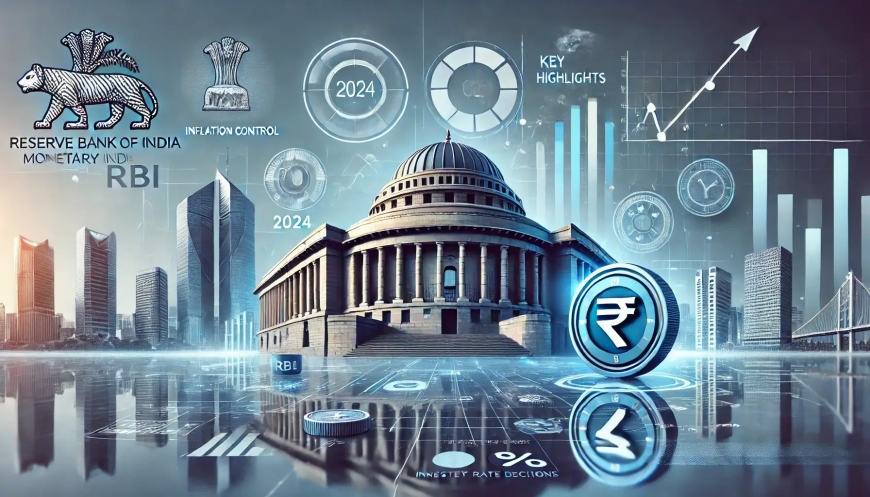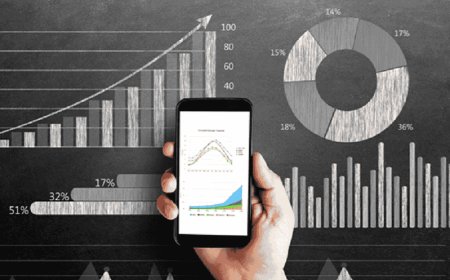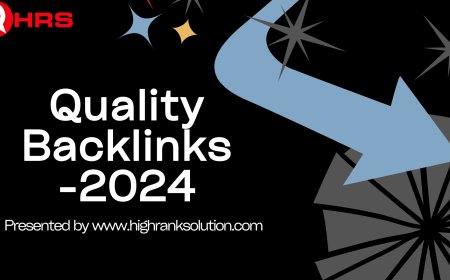RBI Monetary Policy 2024: Key Highlights, Inflation Control, and Interest Rate Decisions
Discover the RBI Monetary Policy 2024, focusing on inflation control, interest rate changes, and economic growth projections. Explore how these policies impact sectors like banking, real estate, and consumer lending.

RBI Monetary Policy 2024: A Comprehensive Overview
Table of Contents
| Heading | Subheading |
|---|---|
| 1. Introduction to RBI Monetary Policy | 1.1 What is Monetary Policy? |
| 1.2 The Role of the RBI in India's Economy | |
| 2. Objectives of RBI’s Monetary Policy | 2.1 Price Stability |
| 2.2 Economic Growth | |
| 2.3 Financial Stability | |
| 3. Instruments of Monetary Policy | 3.1 Repo Rate |
| 3.2 Reverse Repo Rate | |
| 3.3 Cash Reserve Ratio (CRR) | |
| 3.4 Statutory Liquidity Ratio (SLR) | |
| 3.5 Open Market Operations (OMOs) | |
| 4. Historical Context: Evolution of RBI's Policy | 4.1 Pre-Liberalization Era (1947-1991) |
| 4.2 Post-Liberalization Changes | |
| 4.3 Inflation Targeting Regime | |
| 5. RBI Monetary Policy Framework | 5.1 Bi-monthly Monetary Policy Review |
| 5.2 Monetary Policy Committee (MPC) | |
| 6. RBI Monetary Policy 2024: Key Highlights | 6.1 Inflation Forecasts |
| 6.2 Interest Rate Changes | |
| 6.3 Economic Growth Projections | |
| 7. Major Challenges in 2024 | 7.1 Global Economic Uncertainty |
| 7.2 Domestic Economic Factors | |
| 8. Impact of 2024 Policy on Key Sectors | 8.1 Banking and Finance |
| 8.2 Real Estate | |
| 8.3 Stock Market | |
| 8.4 Consumers | |
| 9. How RBI Policy Affects Common Citizens | 9.1 Loan and EMI Rates |
| 9.2 Savings and Investments | |
| 10. Comparison with Global Monetary Policies | 10.1 US Federal Reserve |
| 10.2 European Central Bank (ECB) | |
| 10.3 Bank of England | |
| 11. RBI’s Policy and Digital Currency | 11.1 Central Bank Digital Currency (CBDC) |
| 11.2 Impact on Monetary Policy | |
| 12. FAQs on RBI Monetary Policy 2024 | 12.1 What is the Repo Rate in 2024? |
| 12.2 How does RBI decide on interest rates? | |
| 12.3 What is the role of the MPC? | |
| 13. Conclusion |
1. Introduction to RBI Monetary Policy
1.1 What is Monetary Policy?
Monetary policy refers to the strategic actions taken by a nation's central bank to regulate the supply of money, control inflation, and stabilize the economy. In India, this responsibility rests with the Reserve Bank of India (RBI), the nation's central bank established in 1935 under the Reserve Bank of India Act.
The RBI's monetary policy serves as a vital tool in controlling inflation, managing interest rates, and fostering overall economic growth. It influences lending rates, foreign exchange, employment, and productivity, making it a key driver of financial stability.
1.2 The Role of the RBI in India's Economy
The RBI plays a multifaceted role in the Indian economy. As the central bank, it regulates banks, manages the country's currency, and serves as the government’s banker. It also acts as a monetary authority, guiding the economy through various challenges, including inflationary pressures, fiscal deficits, and global economic fluctuations.
In 2024, the RBI’s policies will address multiple challenges like global economic uncertainties, inflation control, and economic growth recovery after pandemic disruptions.
2. Objectives of RBI’s Monetary Policy
2.1 Price Stability
One of the RBI's primary objectives is maintaining price stability, which is essential for sustainable growth. Price stability involves keeping inflation in check by managing liquidity and controlling excessive demand in the economy. The RBI targets a medium-term inflation rate of 4% with a tolerance band of +/- 2%.
2.2 Economic Growth
Economic growth is another critical objective of the RBI. While maintaining inflation within a reasonable range is vital, the central bank also fosters conditions conducive to high GDP growth. Through various instruments, such as interest rates and lending regulations, the RBI influences consumer spending, investments, and productivity.
2.3 Financial Stability
Ensuring the overall stability of the financial system is essential for economic progress. In 2024, the RBI will continue its efforts to prevent banking crises, manage capital flow, and mitigate risks from external shocks such as global recessions or geopolitical instability.
3. Instruments of Monetary Policy
The RBI utilizes several tools to regulate the economy, each designed to control different aspects of the money supply, demand, and credit availability.
3.1 Repo Rate
The Repo Rate is the interest rate at which the RBI lends money to commercial banks. It is one of the most powerful levers for controlling inflation and liquidity in the economy. In 2024, the RBI will closely monitor global inflation trends to adjust the repo rate accordingly.
3.2 Reverse Repo Rate
In contrast to the repo rate, the Reverse Repo Rate is the interest rate at which commercial banks lend money to the RBI. By increasing the reverse repo rate, the RBI can absorb excess liquidity from the banking system, helping control inflation.
3.3 Cash Reserve Ratio (CRR)
The Cash Reserve Ratio mandates the percentage of a bank's deposits that must be kept with the RBI as reserves. Adjusting the CRR influences the amount of funds available for banks to lend.
3.4 Statutory Liquidity Ratio (SLR)
The Statutory Liquidity Ratio requires banks to maintain a specific percentage of their net demand and time liabilities (NDTL) in the form of liquid assets like cash, gold, or government bonds. SLR changes influence the availability of credit in the economy.
3.5 Open Market Operations (OMOs)
Open Market Operations involve the buying and selling of government securities by the RBI to regulate liquidity in the financial system. OMOs are particularly crucial during periods of excessive volatility or inflationary pressures.
4. Historical Context: Evolution of RBI's Policy
4.1 Pre-Liberalization Era (1947-1991)
Before 1991, India's monetary policy was largely focused on managing credit for planned economic development. Interest rates were tightly regulated, and monetary policy was used to direct credit towards specific sectors like agriculture and industry. The economy was also characterized by high inflation, fiscal deficits, and a reliance on direct controls.
4.2 Post-Liberalization Changes
After economic liberalization in 1991, the RBI's role shifted towards market-oriented monetary policy, emphasizing inflation control, deregulation, and financial sector reforms. The introduction of monetary targeting with feedback in the late 1990s marked a key change.
4.3 Inflation Targeting Regime
In 2016, India formally adopted inflation targeting, which established an inflation rate target of 4%, with a band of +/- 2%. This framework was a major policy shift, requiring the RBI to focus more on price stability rather than growth alone. The Monetary Policy Committee (MPC), consisting of both RBI officials and government nominees, now meets bi-monthly to determine interest rates.
5. RBI Monetary Policy Framework
5.1 Bi-monthly Monetary Policy Review
The RBI's bi-monthly monetary policy review process helps monitor inflationary trends, GDP growth, and other macroeconomic indicators. These reviews determine whether adjustments are needed in the interest rates or other tools to keep inflation within the target range while supporting growth.
5.2 Monetary Policy Committee (MPC)
The Monetary Policy Committee (MPC) plays a crucial role in formulating India's monetary policy. It comprises six members—three from the RBI and three appointed by the government. The committee is responsible for determining the repo rate based on macroeconomic indicators like inflation and GDP forecasts.
6. RBI Monetary Policy 2024: Key Highlights
6.1 Inflation Forecasts
In 2024, inflation control remains a central focus of the RBI. With global commodity prices fluctuating, the RBI's monetary policy will address inflation expectations carefully. Measures like the repo rate adjustment and OMOs will be used to manage inflation within the target range.
6.2 Interest Rate Changes
Interest rate decisions in 2024 will be heavily influenced by both global and domestic economic conditions. With the global economy showing signs of both recovery and potential slowdowns, the RBI will need to navigate these shifts to keep lending rates at a level conducive to growth.
6.3 Economic Growth Projections
The policy will also outline growth projections for India's economy in 2024, balancing between curbing inflation and fostering growth. The central bank's monetary policy will work in conjunction with fiscal policies to spur investments and consumption.
7. Major Challenges in 2024
7.1 Global Economic Uncertainty
Global economic uncertainty, driven by geopolitical tensions, supply chain disruptions, and inflationary pressures in major economies, will pose challenges for the RBI in 2024. External factors like commodity prices, exchange rates, and global interest rates can significantly influence domestic monetary policy.
7.2 Domestic Economic Factors
Domestically, the RBI will need to address challenges such as fiscal deficits, rising unemployment, and sector-specific slowdowns. Ensuring adequate liquidity while avoiding excessive inflation will be key concerns.
8. Impact of 2024 Policy on Key Sectors
8.1 Banking and Finance
RBI's monetary policy directly affects the banking and financial sector. Changes in the repo rate and CRR influence the interest rates offered by banks, impacting both lending and deposit rates. In 2024, any rate cuts could stimulate borrowing and lending, while rate hikes could tighten the credit environment.
8.2 Real Estate
The real estate sector is highly sensitive to changes in interest rates. A lower interest rate regime can stimulate real estate investments by making home loans cheaper, while higher rates could slow down the sector by increasing borrowing costs.
8.3 Stock Market
The stock market reacts swiftly to changes in monetary policy. Lower interest rates often encourage investors to seek higher returns in equity markets, while rising rates can lead to a shift towards safer assets like bonds.
8.4 Consumers
Consumers will experience changes in the cost of borrowing, including home loans, car loans, and personal loans, based on the RBI's policy. A reduction in the repo rate can make loans more affordable, boosting consumer spending.
9. How RBI Policy Affects Common Citizens
9.1 Loan and EMI Rates
For the average citizen, the RBI's decisions on the repo rate directly impact loan interest rates. Lower rates reduce the EMI burden on loans, making it easier for individuals to purchase homes, cars, and consumer goods.
9.2 Savings and Investments
Interest rates also affect returns on savings instruments such as fixed deposits. A higher repo rate may lead to higher deposit rates, while a lower rate could reduce the income from savings accounts, impacting those reliant on fixed-income investments.
10. Comparison with Global Monetary Policies
10.1 US Federal Reserve
The US Federal Reserve plays a similar role to the RBI, regulating monetary policy to ensure stable prices and maximum employment. However, the Fed’s influence on global financial markets is far more extensive due to the US dollar's role as the world's reserve currency.
10.2 European Central Bank (ECB)
The ECB focuses on maintaining price stability across the Eurozone, using tools like the main refinancing operations and the deposit facility rate. In 2024, both the ECB and the RBI are expected to contend with rising inflationary pressures.
10.3 Bank of England
The Bank of England's policy decisions are often influenced by both domestic and global factors, particularly Brexit-related economic changes. Similar to the RBI, the BoE will focus on navigating inflation while promoting economic growth in 2024.
11. RBI’s Policy and Digital Currency
11.1 Central Bank Digital Currency (CBDC)
In recent years, the RBI has made progress toward launching a Central Bank Digital Currency (CBDC). The introduction of digital currency could transform monetary policy by enhancing the transmission mechanism and providing real-time insights into the economy.
11.2 Impact on Monetary Policy
The CBDC can potentially alter how the RBI conducts monetary policy by offering greater control over the money supply, improving efficiency in transactions, and reducing the reliance on cash.
12. FAQs on RBI Monetary Policy 2024
12.1 What is the Repo Rate in 2024?
The repo rate in 2024 will depend on inflationary trends, growth forecasts, and global economic conditions. Currently, the rate is adjusted bi-monthly by the MPC based on real-time data.
12.2 How does RBI decide on interest rates?
Interest rate decisions are made by the Monetary Policy Committee (MPC), which reviews macroeconomic factors such as inflation, GDP growth, and global financial conditions.
12.3 What is the role of the MPC?
The MPC is a six-member body responsible for deciding the benchmark interest rate (repo rate) based on inflation forecasts and other economic indicators. It meets bi-monthly to review the monetary policy stance.
13. Conclusion
The RBI’s Monetary Policy for 2024 will play a critical role in shaping India's economic trajectory, balancing inflation control with growth promotion. In an era marked by global uncertainties, domestic challenges, and rapid technological changes, the RBI’s policy decisions will impact every aspect of the economy—from the banking sector to the daily lives of citizens.
What's Your Reaction?

































